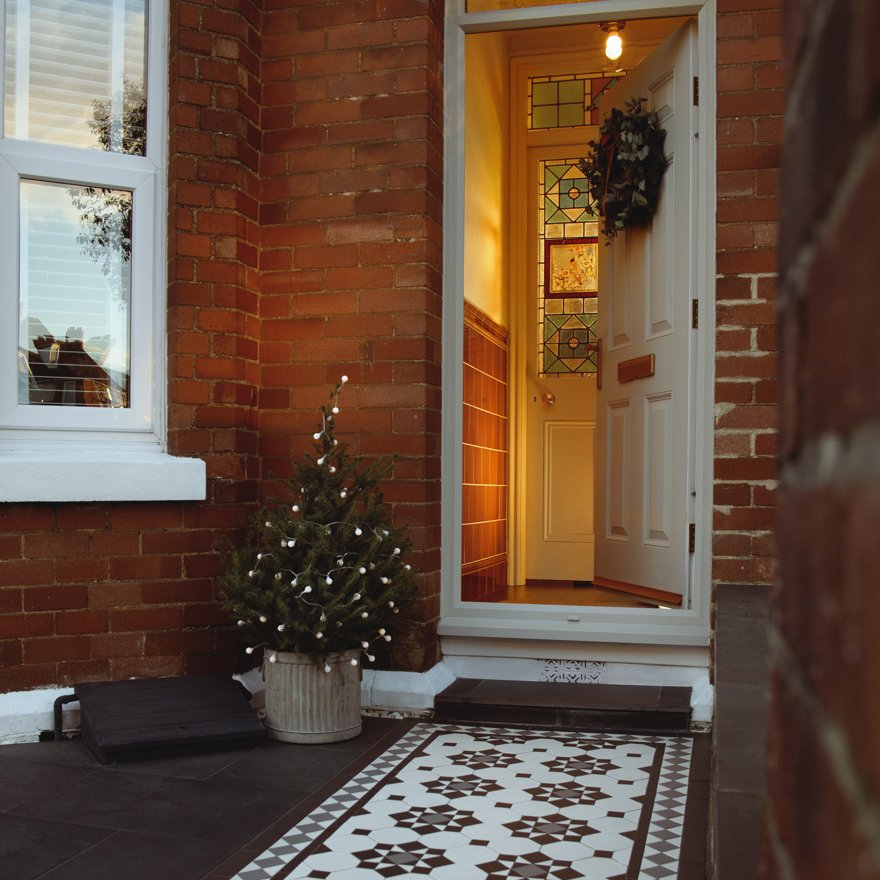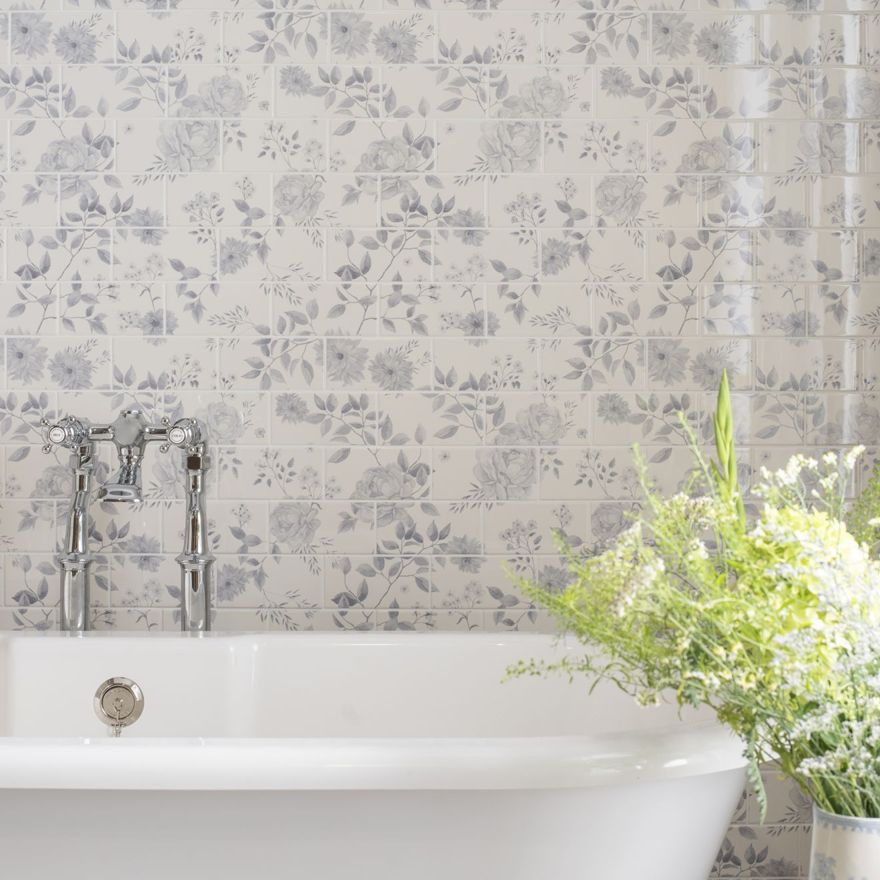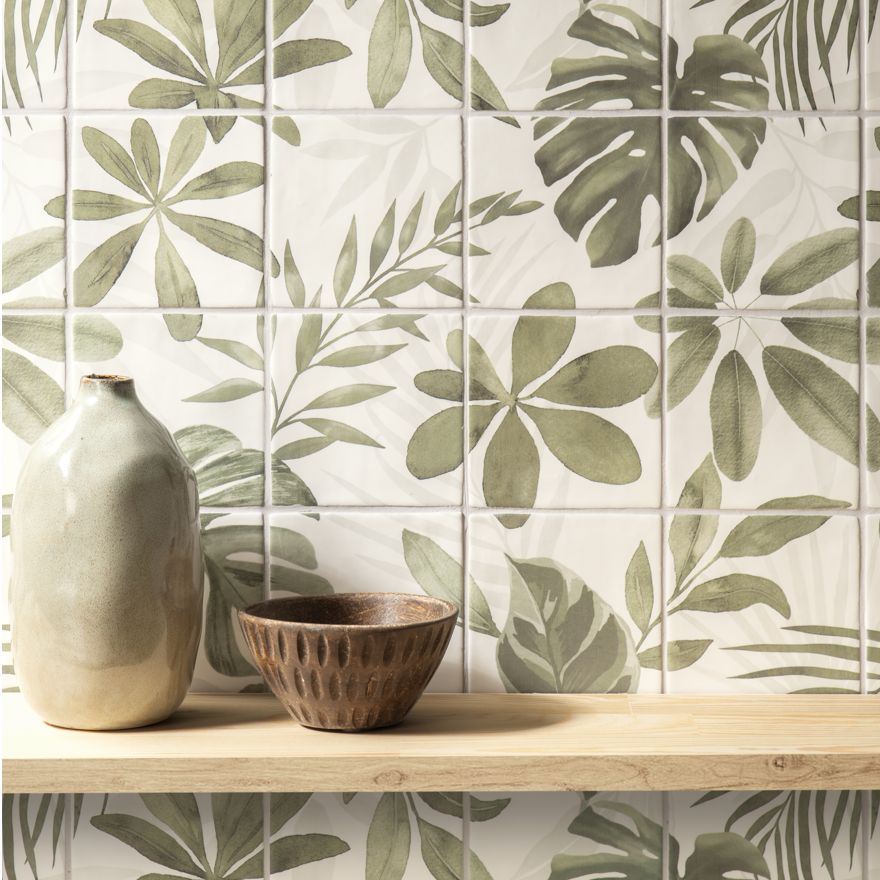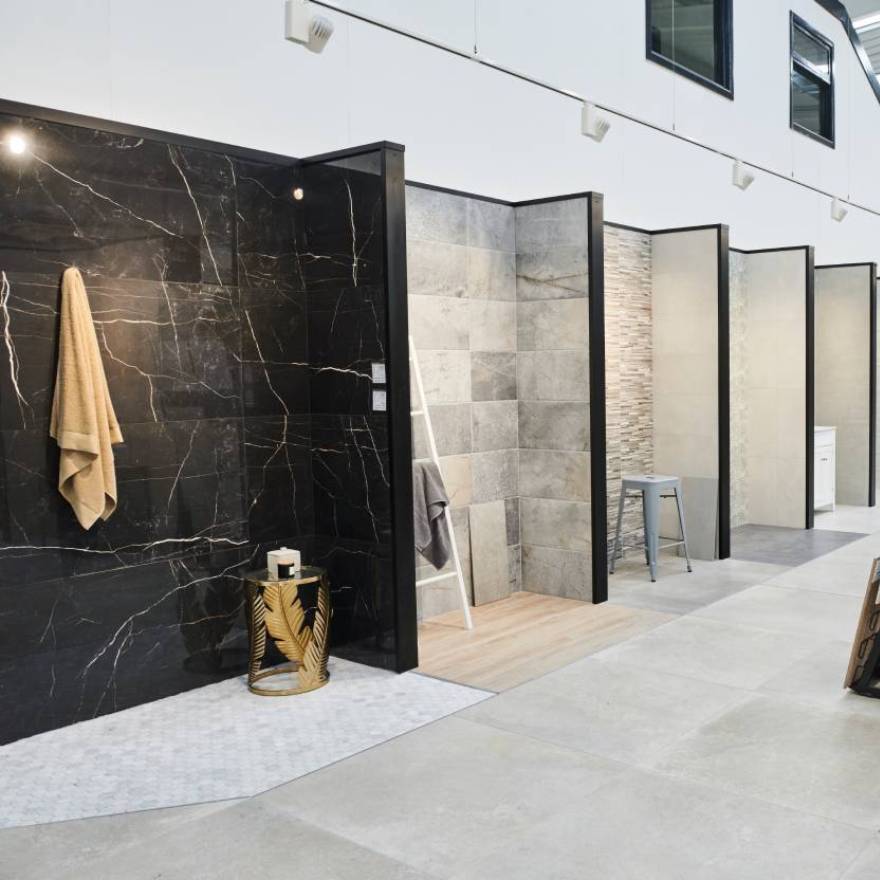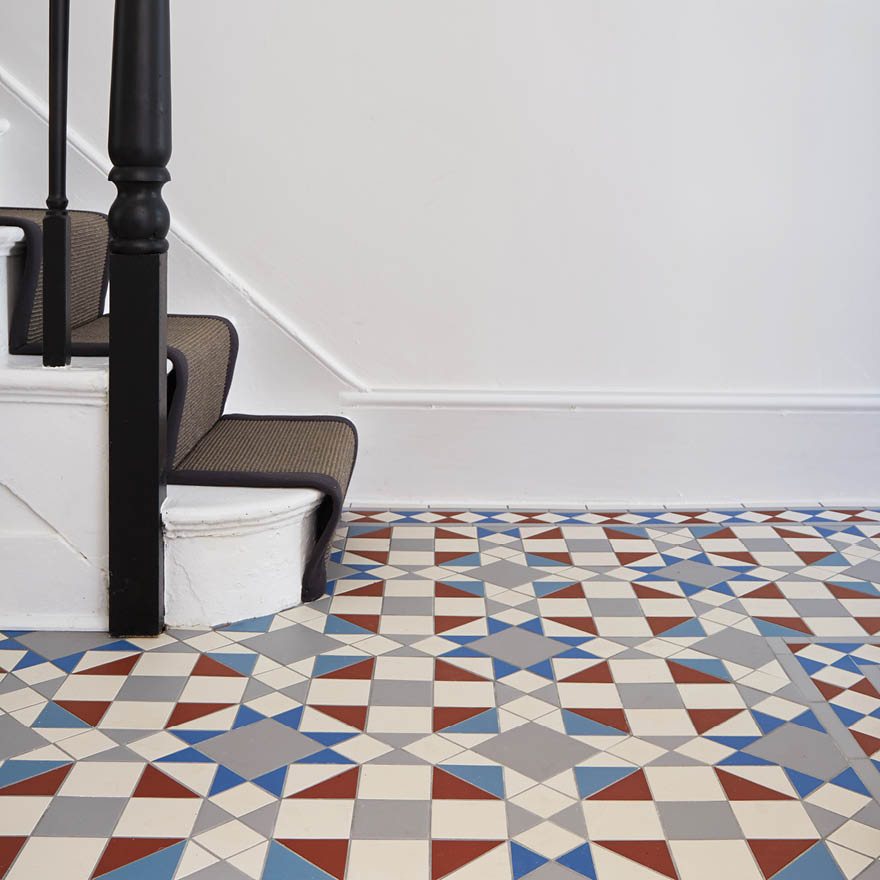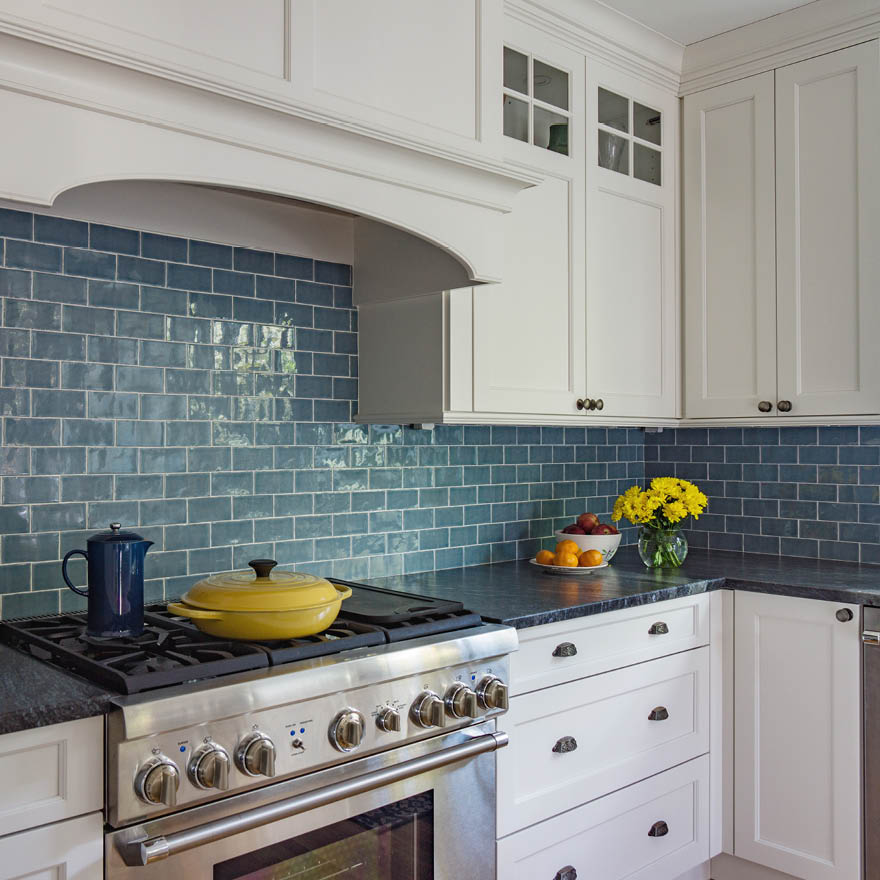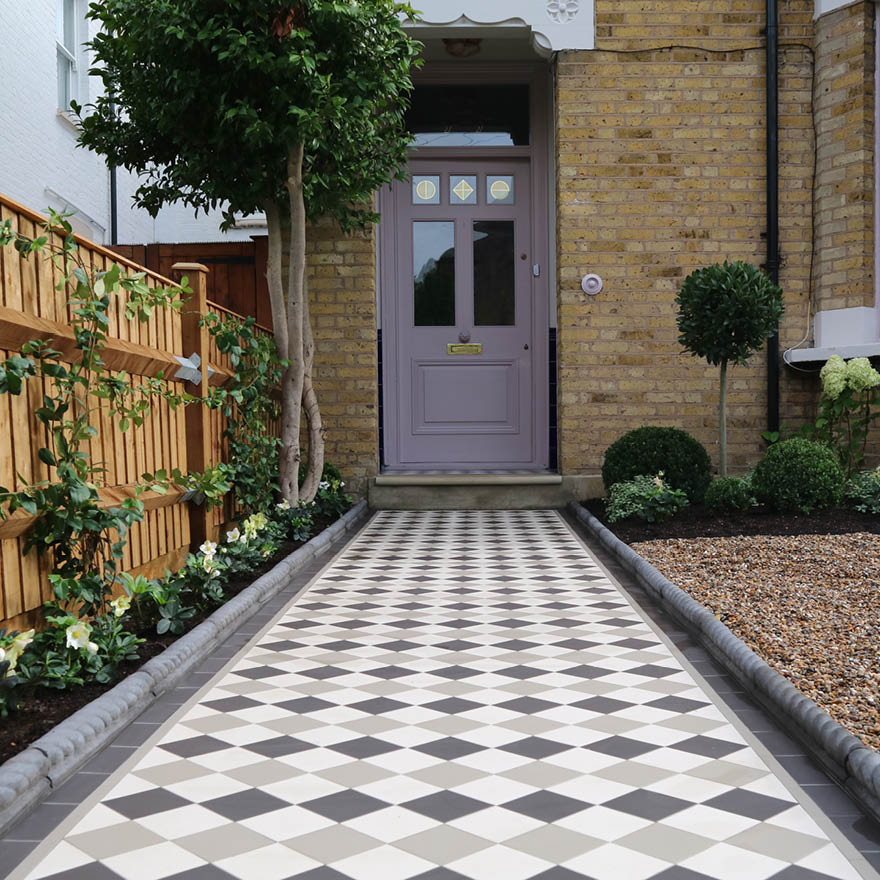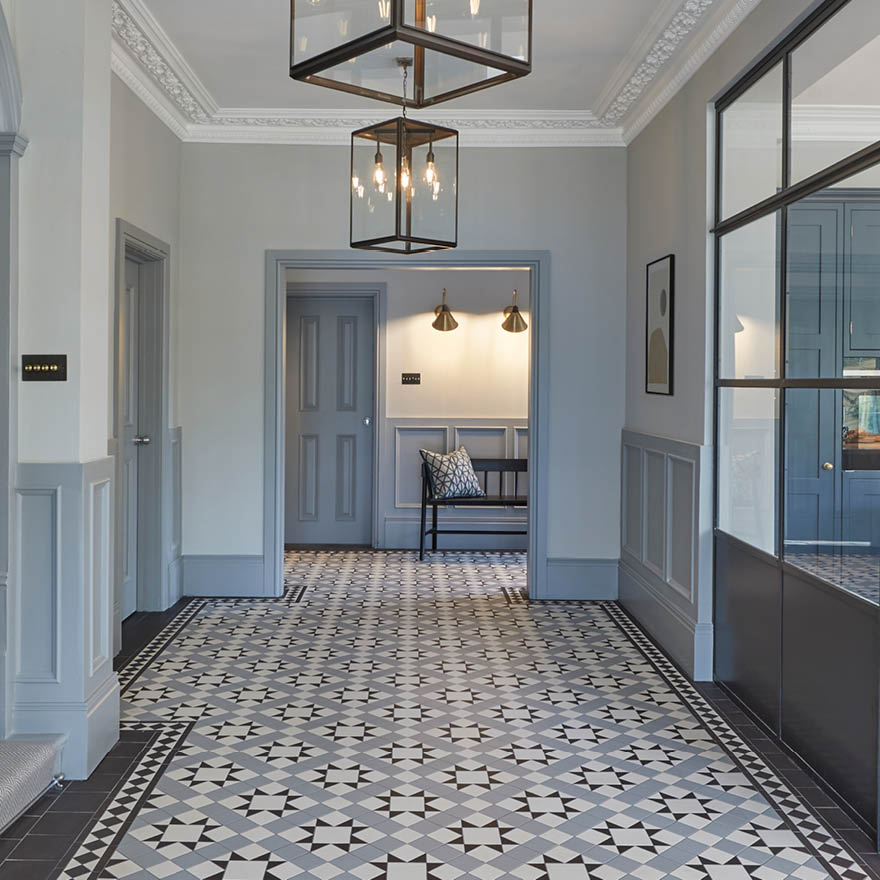Ph: 03330 151276 9am-5:30pm M-F
- 03330 151276 9am-5.30pm M-F
Ph: 03330 151276 9am-5.30pm M-F
- 03330 151276 9am-5.30pm M-F
A Stunning Home Renovation with Victorian Floor Tiles
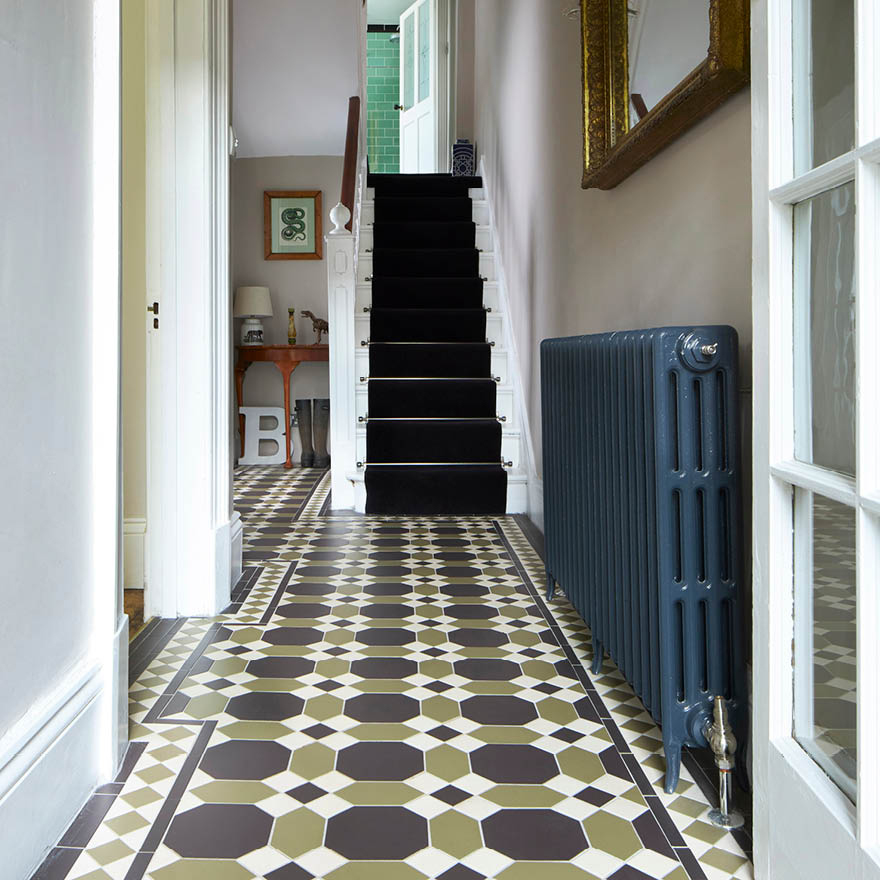
Here at Original Style there’s nothing we love more than seeing our tiles in customers’ homes. From the patterns and colours chosen, to how they’re styled, we’re always delighted to see just how much tiles can totally transform a space, especially when renovating period properties.
A few months ago, we were tagged in a gorgeous Victorian Floor Tile project on Social Media and we just couldn’t resist finding out more about it! We loved the use of pattern and colourways and were thrilled when Helen Barber, the homeowner, agreed to undertake a Q&A with us to shed some light on her experience and help our blog readers with their future Victorian Floor Tile projects. Not only this, but we also caught up with Helen’s tiler, Mickey, to provide some insight into the installation of these intricate tiles.
Q. Please could you tell us a little bit about you, where you live and how long you’ve lived in your house? A. I live in Harrogate North Yorkshire, originally from Manchester but relocated around 16 years ago. The property was purchased in 2010.
Q. Tell us about your property, do you know when it was built? Does it have any interesting history? What made you go for this style of property? A. The property is a four bed Victorian Town House, which was very dated when it was bought! I like character houses and although the décor was very dated and the house needed a lot doing to it, I loved the idea of restoring it and putting my own mark on it. It had some lovely features like the original cornice in some rooms and a stain glass window in the hall. I loved the size and heights of the rooms and how much space you get in these types of houses. Although it still had the original cornice in places, every room needed work, it definitely was a ‘doer upper’. When the house was initially bought I always knew the hall needed to be impressive and had always admired hallways that had original Victorian tiled floors. I promised myself that I would restore the hall and make it glamorous – with the hope that friends and family were wowed when they walked in. Hallways are usually the first thing that visitors see so it should, in one respect be the place that impresses first. The kitchen is also a place where family congregate, which is why we thought it would look lovely if the tiles went through from the hall into the kitchen, so we moved the kitchen into the old dining room. This meant we could have the chimney as part of the kitchen and made the old galley kitchen a lounge, where we added a small extension to create a dining living area.

Q. What were your primary goals when it came to updating these spaces? A. My goals were to make the space traditional but with a contemporary feel. Myself and my partner Matthew, wanted these spaces to be areas we enjoyed being in so I did lots of research before I made decisions about what we would purchase. I always loved Victorian flooring, the colours and the patterns always wowed me and I feel the kitchen we have from Neptune works really well with the floor.
Q. Where did you find your inspiration for the renovation of your kitchen and hallway? A. From researching Victorian homes through magazines and online as well as living in Harrogate, which has a number of traditional Victorian properties and buildings - it was easy to walk into shops and see Victorian floors and tiles which always gave me inspiration!
Q. What made you choose Original Style’s Victorian Floor Tiles? A. I had used Original Style tiles on the hearth where my log burner is in the lounge, so I knew they were good quality tiles, but it was Mickey Horner a tiler from Clattergate that recommended using them for the Hall and Kitchen project. When I asked Mickey to come round and give me an idea of costs we spoke at length about the best tiles to use and the tiles which were more authentic to me creating a bit more of a Victorian traditional feel.

Q. We offer a CAD (computer aided design) service, did you use this? If so, did it help you visualise the tiles in your home? A. I initially couldn’t decide on the colours that we wanted so this really helped with the final decision as well as the style.
Q. Why did you choose this particular Victorian Floor Tile pattern, border and colourway? A. We chose the Warwick design as I had done a lot of research on traditional Victorian styles. I had looked online and through the Original style brochure, I wanted a very traditional look with something at least three colours could be used in, so the Warwick pattern was perfect. Our tiler Mickey advised us on the borders and colours to use, we chose the Dover White, Green and Black, I always knew I wanted black and white in the mix so it was just choosing another colour.
Q. How important were the tiles in the renovation of your hallway/kitchen and what was it that you found appealing about them? A. It was immensely important, we have spent so much time and love on trying to restore the rest of the house that the hall and kitchen flooring had to be perfect. I wanted the tiles to feel original and as close to Victorian as I could. I also wanted something bespoke and although the pattern is a traditional one, the colours are quite striking and different. The flooring to me sets the house apart and makes a real statement and we absolutely love the tiles!
Q. How did you source your tiler and how important would you say using a professional and experienced tiler is? A. I sourced Mickey from searching online for traditional floor tilers in Yorkshire and looked through Instagram too. He was brilliant from day one, happy to listen to what we wanted and offered ideas too. He showed us previous floors that he had created and we visited his showroom to see the tiles before committing to the project. He was very professional and approachable and we trusted from day one, knowing that the end result would be fab! Nothing phased him and he knew exactly what to do when we discovered my kitchen island wasn’t square (in fact the pattern really helped when we discovered this). The fact that Mickey was experienced in this type of traditional Victorian tiling and could prove his ability from previous projects he had done really reassured me that he knew exactly what he was doing.
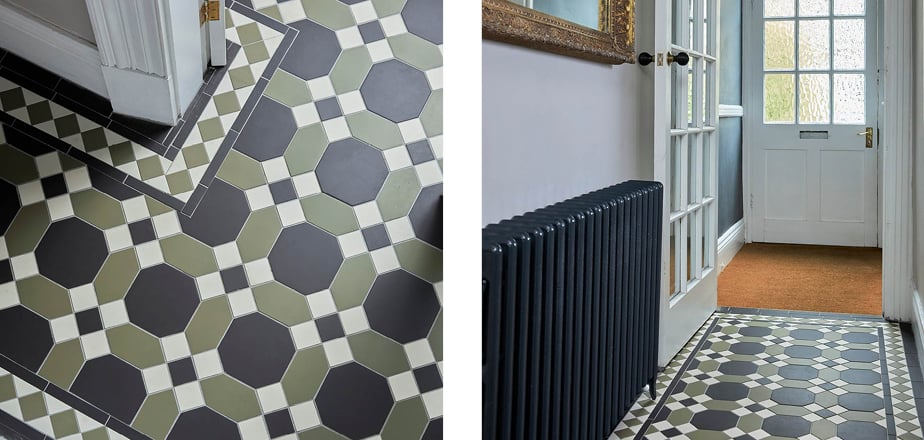
We also caught up with tiler, Mickey Horner, to find out more about installing Victorian Floor Tiles
Q. Please could you tell us a little bit about you, where you live and how long you’ve been a professional tiler? A. I live in a small town called Rawdon just on the outskirts of Leeds, West Yorkshire. I have been tiling full time for almost 20 years, although I often joke that I was tiling as soon as I could walk! My father was a tiler and used to take me to work with him in school holidays and weekends. I took over the family business around 13 years ago.
Q. How did you train to be become a Victorian Floor Tiler? A. I fell into Victorian floor tiling by accident really, but I had always loved the intricate designs of Victorian floors. We had worked for a high-end restaurant and bar fit out company for a number of years, carrying out wall and floor tiling to toilets and bar fronts etc. They were then awarded some work in Sweden and we were sent some sketches that showed a patterned Victorian floor to be done in the bar area of a restaurant. I did some research before we left in terms of setting out details, but it wasn’t until we reached site in Sweden that we then discovered the enormity of the task!
Q. What was it that interested you about Victorian Floor Tiles to learn the skill to install them? A. I love the variety of colours and patterns available from Original style and the flexibility of being able to choose your own colours and different borders to suit a client’s interior design and budget.
Q. What are the differences of installing Victorian Floor Tiles compared to general tiling? A. The main difference between general floor tiling and Victorian or geometric tiling is the increased amount of time spent on both the setting out phase as well as the installation phase.
Q. What would you say to those who are considering learning the craft and skill of installing Victorian Floor Tiles? A. I would probably use the analogy of “horses for courses”. Like horse racing, some prefer some courses to others. I would say it’s the same for tiling and Victorian Floor tiling. I think you have to have a certain skill set to be able to do it. I know tilers with 30+ years of experience who hate Victorian floor tiling and really struggle, whereas I picked it up relatively quickly. It all depends on the person. I think the main characteristics would be patience, eye for detail and being able to visualise space, shapes and patterns as well as being very organised.
Q. What are the most common obstacles that you have to try and overcome when installing Victorian Floor Tiles? A. The most common obstacles are navigating border the around door-ways, staircases. As well as setting the pattern as symmetrical as the space will allow.
Q. We offer a CAD (computer aided design) service, do you ever use this? If so, do you find it helps your clients visualise the tiles in their home? A. Yes we always use the CAD service available this really helps the client to choose colour combinations and patterns as well as visualise the final result. It is also very useful for when estimating the amount of tiles required for the project.
Q. What did you enjoy the most about installing Helen's Victorian Floor Tiles? A. I really enjoyed working on Helens floor as it came with some extra obstacles. As well as the usual doorways and staircases, Helen wanted the design to run into the kitchen as well. This came with its own challenges in that, as with many period properties, the rooms adjacent to hallways are not always parallel or square which makes the setting out all the more crucial. Couple that with a kitchen island to circumvent, this was a tricky install! But in the end all the more worth it and I was very pleased with how it came together in the end.




